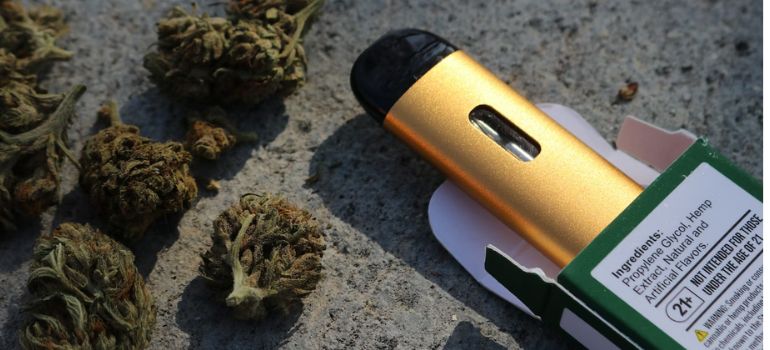Disposable vapes, also known as disposable e-cigarettes or cig-a-likes, are made up of several key components that come together to create a convenient, single-use vaping device. Here’s a general overview of how disposable vapes are typically made:
Table of Contents
Toggle- Outer Shell:
- Battery:
- E-Liquid Reservoir:
- Heating Element:
- Airflow System:
- LED Indicator:
- Nicotine and Flavorings:
- Disposable Design:
- FAQ
- Q1: What materials are commonly used to make the outer shell of disposable vapes?
- Q2: Are the batteries in disposable vapes rechargeable?
- Q3: How is the e-liquid reservoir sealed to prevent leaks in disposable vapes?
- Q4: What types of heating elements are commonly used in disposable vapes?
- Q5: How is the airflow system designed in disposable vapes to ensure a smooth vaping experience?
- Conclusion
Outer Shell:
The outer casing or shell of a disposable vape is usually made of plastic or metal. It’s designed to encase and protect the internal components, including the battery and e-liquid.
Battery:
The disposable vape contains a non-rechargeable battery. This battery is typically a small, low-capacity lithium-ion or lithium-polymer battery that is designed to provide power for the device’s lifespan, which is usually around 300 to 400 puffs on average.
E-Liquid Reservoir:
Inside the disposable vape, there is a pre-filled reservoir or cartridge that holds the e-liquid. This reservoir is typically sealed to prevent leaks and to ensure the e-liquid remains fresh until the device is used.
Heating Element:
A heating element, often a coil or heating wire, is located inside the device. When the user inhales or activates the device, the heating element heats up. This heat is then applied to the e-liquid, turning it into vapor that the user inhales.
Airflow System:
Disposable vapes have an airflow system that allows air to flow through the device when the user inhales. This airflow is carefully designed to provide a smooth and comfortable vaping experience.
LED Indicator:
Many disposable vapes have an LED indicator at the tip that lights up when the device is activated. This LED simulates the appearance of a lit cigarette, providing a visual cue to the user.
Nicotine and Flavorings:
The e-liquid inside the disposable vape contains a mixture of nicotine, flavorings, and other ingredients. The exact formulation can vary depending on the brand and flavor. Some disposable vapes contain nicotine salts for a smoother vaping experience.
Disposable Design:
One of the defining features of disposable vapes is their single-use design. Once the e-liquid is depleted or the battery runs out, the entire device is meant to be disposed of responsibly. This design eliminates the need for refilling or recharging.

FAQ
Q1: What materials are commonly used to make the outer shell of disposable vapes?
A: Disposable vape shells are typically made from plastic or metal. These materials are chosen for their durability and lightweight properties.
Q2: Are the batteries in disposable vapes rechargeable?
A: No, the batteries in disposable vapes are non-rechargeable. They are designed for single use and have a limited lifespan, usually providing power for approximately 300 to 400 puffs on average.
Q3: How is the e-liquid reservoir sealed to prevent leaks in disposable vapes?
A: The e-liquid reservoir in disposable vapes is sealed using various methods, including O-rings, gaskets, and adhesive seals. These seals are carefully applied during the manufacturing process to prevent any leakage of e-liquid.
Q4: What types of heating elements are commonly used in disposable vapes?
A: Disposable vapes typically use heating elements in the form of coils or heating wires. These elements are made from materials like Kanthal, nichrome, or stainless steel and are designed to heat up rapidly when the device is activated.
Q5: How is the airflow system designed in disposable vapes to ensure a smooth vaping experience?
A: The airflow system in disposable vapes is designed to balance the flow of air with the vapor production. It often includes small air channels and vents that are strategically placed to provide a comfortable and consistent draw when the user inhales.
Conclusion
It’s important to note that the specific design and components of disposable vapes can vary between manufacturers and models. Additionally, the e-liquids used in these devices should comply with relevant safety and quality standards to ensure a safe vaping experience. Always follow the manufacturer’s instructions and dispose of disposable vapes properly, according to local regulations.

